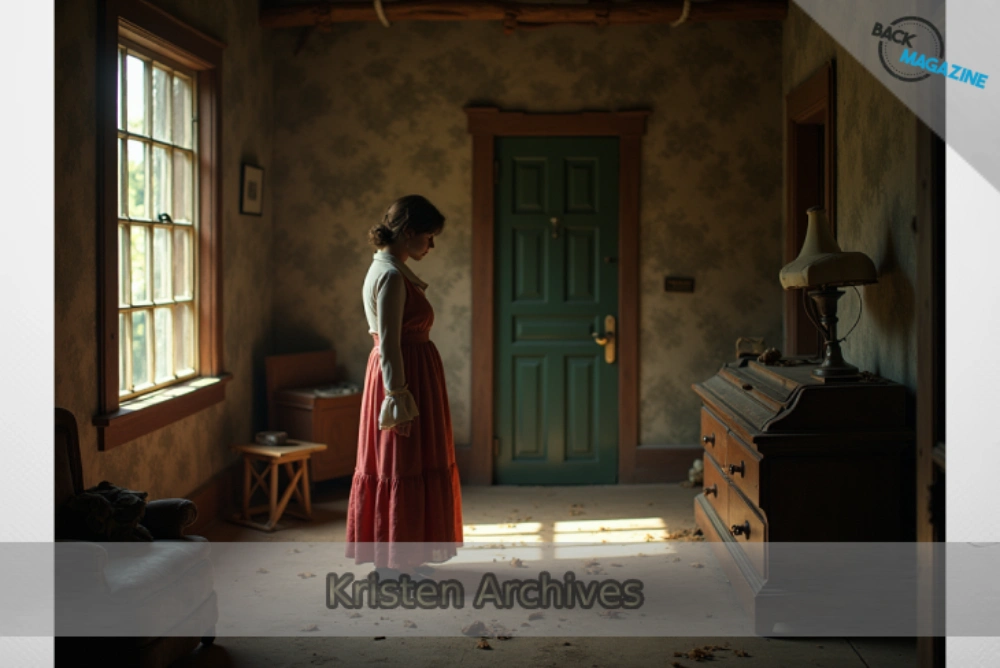Digital storytelling has transformed the way we share narratives, making them more accessible and engaging than ever before. Among the platforms that have embraced this evolution is Kristen Archives. This unique collection of stories not only showcases a diverse range of tales but also serves as a testament to the power of digital mediums in telling captivating narratives. Whether you are an avid reader or a budding storyteller, understanding how Kristen Archives operates within this realm can open up new doors for creativity and connection. Let’s dive into what makes Kristen Archives an essential hub for digital storytelling enthusiasts around the globe.
History and Evolution of Digital Storytelling
Digital storytelling has roots that trace back to the dawn of computers. Early experiments with multimedia in the 1960s showcased how narratives could transcend traditional formats. As technology advanced, so did the tools available for storytellers.
The rise of personal computing in the 1980s opened new avenues. Individuals began creating stories using simple software programs. The internet revolution further transformed this landscape in the late 1990s, enabling global sharing and collaboration.
With platforms like YouTube and blogs emerging, anyone could become a storyteller. Interactive elements became crucial, engaging audiences beyond passive consumption.
Today, digital storytelling encompasses diverse forms—videos, podcasts, and social media narratives are just a few examples. Each evolution marks a significant leap toward richer engagement and accessibility for creatives worldwide.
How Kristen Archives Utilizes Digital Storytelling
Kristen Archives brings digital storytelling to life through a vibrant collection of narratives. The platform allows users to explore varied genres, from romance to fantasy, making it an engaging space for readers and writers alike.
At its core, Kristen Archives leverages user-generated content. Writers can submit their stories, fostering a community-driven approach. This encourages diverse voices and perspectives within the narrative landscape.
Visual elements also play a vital role on the site. Cover art complements each story, creating an immersive experience that draws readers in.
Additionally, interactive features enhance engagement; comments sections invite discussions among fans and authors alike. This dynamic interaction cultivates loyalty and passion within the community.
Through these methods, Kristen Archives showcases how digital storytelling can create connections between creators and audiences while expanding literary horizons in the online realm.
The Impact of Digital Storytelling on Audiences
Digital storytelling captivates audiences in ways traditional mediums often can’t. It combines visuals, audio, and narrative to create immersive experiences. This multi-sensory approach engages viewers on a deeper level.
Audiences feel more connected when stories unfold through relatable characters and engaging plots. They often see themselves reflected in these narratives, fostering empathy and understanding.
Moreover, the interactive nature of digital storytelling invites participation. Viewers can share their thoughts or even contribute content, transforming passive consumption into active engagement.
This evolution encourages communities to form around shared interests and themes found within digital tales. As people discuss and debate storylines online, they forge connections that extend beyond the screen.
The immediacy of digital platforms means that reactions are instant. Audiences express themselves quickly via comments or shares, amplifying the reach of compelling stories far beyond initial expectations.
Benefits and Challenges of Using Digital Storytelling
Digital storytelling offers numerous benefits. It allows creators to engage audiences in a way that traditional methods often can’t match. Visual elements combined with narrative create an immersive experience, capturing attention and evoking emotions like never before.
However, challenges exist. The technical skills required can be daunting for some storytellers. Navigating software or multimedia tools isn’t always straightforward.
Moreover, not all stories translate well into digital formats. Some narratives lose their essence when altered from written text to visual media.
Audience expectations also play a significant role. In the age of rapid content consumption, maintaining interest is crucial yet increasingly difficult.
Despite these hurdles, the rewards of connecting deeply with viewers make it worthwhile for many creators exploring this dynamic medium. Balancing creativity with technology will continue to shape how stories are told digitally.
Tips for Creating Effective Digital Stories
Creating effective digital stories requires a blend of creativity and strategic planning. Start by defining your core message. What do you want your audience to take away? A strong foundation is essential for impactful storytelling.
Visual elements play a crucial role in engagement. Use high-quality images, videos, or animations that complement your narrative. They should enhance the story rather than distract from it.
Keep language clear and concise. Digital audiences often skim content, so make every word count. Avoid jargon unless it’s necessary for context.
Incorporate interactive elements whenever possible. Quizzes or polls can invite participation and deepen the viewer’s connection to the story.
Don’t forget about pacing. Maintain a rhythm that keeps viewers interested but allows them time to absorb information fully. Balancing these aspects will elevate any digital storytelling effort significantly.
Future of Digital Storytelling through the Kristen Archives
The future of digital storytelling through the Kristen Archives is poised for exciting developments. As technology continues to evolve, new formats will emerge that enhance how stories are told and experienced.
Imagine immersive virtual reality experiences where readers can step into a narrative. The Kristen Archives could harness this potential, allowing users to engage with characters in real-time scenarios.
AI-driven personalized content may also redefine storytelling dynamics. Tailoring narratives based on user preferences would create unique experiences for each reader, making every visit special.
Moreover, community engagement within the archives could flourish. Readers might collaborate on story creation or share their interpretations, fostering a vibrant ecosystem of creativity.
As these innovations unfold, the Kristen Archives stands at the forefront of this transformation. It promises an enriched platform that celebrates diverse voices and innovative storytelling methods while maintaining its commitment to quality content.
Conclusion
Digital storytelling has transformed the way narratives are shared and experienced. Kristen Archives stands at the forefront of this shift, offering a platform that not only hosts diverse stories but also encourages creativity among its users. As technology continues to evolve, so too will the methods we use to tell our stories.
The impact of digital storytelling on audiences cannot be understated. It fosters connection and empathy, bridging gaps between different cultures and experiences. For those looking to explore or contribute their own tales, Kristen Archives provides an ideal space to do so.
Challenges remain in striking a balance between innovation and accessibility. Yet, with thoughtful approaches and techniques, creators can enhance their storytelling capabilities efficiently.
As we look ahead, it’s clear that platforms like Kristen Archives will continue to shape the landscape of digital narrative sharing. The possibilities for engagement are limitless; every story told is a step towards greater understanding within our communities.
Embracing this rich tapestry of voices offers both excitement and responsibility as storytellers navigate new frontiers in expression through the evolving world of digital media.

